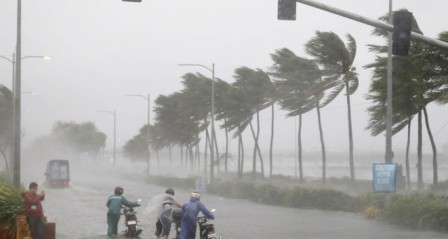Low Pressure Over Bay Of Bengal In 24 Hrs

Bhubaneswar,March 15: A low pressure area is likely to form over Equatorial Indian Ocean and adjoining Southwest Bay of Bengal during the next 24 hours, the India Meteorological Department (IMD) said today.
“The cyclonic circulation over Equatorial Indian Ocean & adjoining Southeast Bay of Bengal now lies over Equatorial Indian Ocean & adjoining Southwest Bay of Bengal and extends upto mid-tropospheric level. Under its influence, a Low Pressure Area is likely to form over the same area during next 24 hours,” the agency said in its bulletin issued this noon.
The IMD was yet to make any forecast regarding chances of intensification of the system and formation of cyclonic storm. IMD DG Mrutyunjay Mohapatra said no forecast about the probability of cyclone has been made by the agency, as of now.
Sarat Chandra Sahu, Director of the Centre for Environment and Climate of SOA University, said some models indicate intensification of the system. It may initially move northwards and then northwestwards. They system may change its path towards north-northeastwards direction while being around 200 km away from Odisha coast and head towards Bangladesh, said Sahu.
The system may cross the Bangladesh coast around the forenoon of March 23. Precise forecast path and speed of the system can be known on March 20, he said.
Under the influence of the system, coastal Odisha may witness light to moderate rainfall. Chances of formation of a severe cyclone are very less, he added.
The IMD in its ‘North Indian Ocean Extended Range Outlook’ issued on March 10 had said that some models like IMD GFS, ECMWF, ECMWF ensemble and NCEP GFS indicated a cyclonic circulation formation over central parts of south Bay of Bengal by March 16.
Favourable MJO & sea conditions and various models guidance indicate development of a cyclonic circulation over the central parts of south Bay of Bengal leading to enhanced convective activity over the region, the agency had said.
Weather expert Surendranath Pasupalak said NCEP GFS model has indicated chances of change of direction of the possible system and it may not strike the coast of India. The country has not witnessed any cyclone in the month of March during the last few years. However, climate change might result in movement of the system towards India coast, he said, adding that a clear picture of the system will come to fore around March 20.
Notably, the Bay of Bengal has hosted as many as six cyclonic storms in the month of March since 1901. Similarly, such storms in April usually head towards Myanmar and Bangladesh. However, the storms also have a history of striking India’s coastline from Tamil Nadu and Andhra Pradesh to Odisha and West Bengal.





